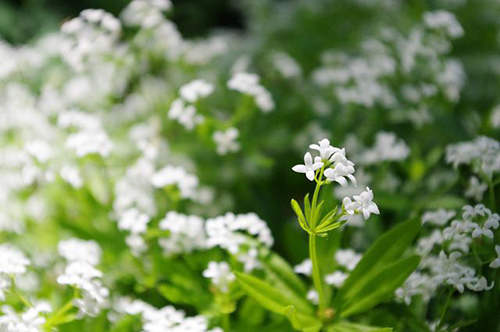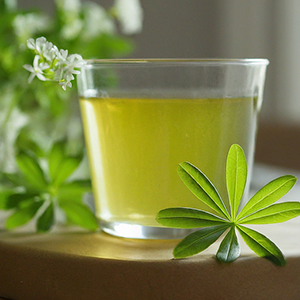Contents
For centuries, the woodruff plant has been used in Northern European countries to make Maiwein (or May wine). This alcoholic beverage is made with the cold extract of woodruff in white wine. Fortunately, people are drinking less and less of this liquor, which, when taken regularly, provokes violent headaches, memory loss, and nervous system disorders.
- Ingredients: 100% Natural Sweet Woodruff, Cut
- Latin: Galium Odoratum | Origin: Albania
- Net Weight: 1 Ounce / 28 Gram

Woodruff Plant Scientific Facts
- Scientific Name: Asperula odorata L.
- Other Names: Master of the wood, sweet woodruff, woodward.
- French: Asperule, reine des bois.
- Spanish: Aspérula olorrosa, reina de los bosques.
- Environment: It grows in cool forests (usually beech-free) in warm European regions and is cultivated in the United States and other American countries.
- Description: This vibrant plant of the Rubiaceae family grows from 20 to 30 cm high and has lanceolate, rough leaves growing in groups of six to eight. Its flowers are white.
- Parts of the plant used medicinally: The complete plant except for the root.
Healing Properties

The active component of the woodruff plant is asperuloside, a glycoside that becomes coumarin; then, the plant is dried. Many properties have been ascribed to woodruff:

- Antispasmodic: Its most outstanding property is that it promotes digestion for nervous people and fights stomach and intestinal spasms.
- Sedative and narcotic (induce sleepiness) when taken in high doses.
- Anticoagulant and blood thinning.
- Diuretics and urinary antiseptics are recommended for urinary infections (cystitis and pyelonephritis) and kidney stones.
- Eye anti-inflammatory, applied for blepharitis (inflammation of the eyelids) and conjunctivitis.
How to use Woodruff
- Infusion with 40 to 50 grams of dried plant per liter of water. Drink two or three cups daily.
- Eye baths: Wash your eyes with a decoction of 50 grams of plant per liter of water, and boil for 5 minutes to sterilize it before applying it to the eyes.
DISCLAIMER: All content on this website is presented solely for educational and informational objectives. Do not rely on the information provided as a replacement for advice, diagnosis, or treatment from a qualified medical expert. If you are pregnant, nursing, or have any preexisting medical concerns, talk to your doctor before using any herbal or natural medicines.
REFERENCES
- George D. Pamplona-Roger, M.D. “Encyclopedia of Medicinal Plants.” George D. Pamplona-Roger, M.D. Encyclopedia of Medicinal Plants. Ed. Francesc X. Gelabert. Vols. 1 San Fernando de Henares: Editorial Safeliz, 2000. 351. Print. [woodruff plant]
- https://www.drugs.com/npp/woodruff-sweet.html
- https://www.drugs.com/npp/woodruff-sweet.html
- WebMD: https://www.woodrufflab.org/
Last update on 2025-06-18 / Affiliate links / Images from Amazon Product Advertising API





